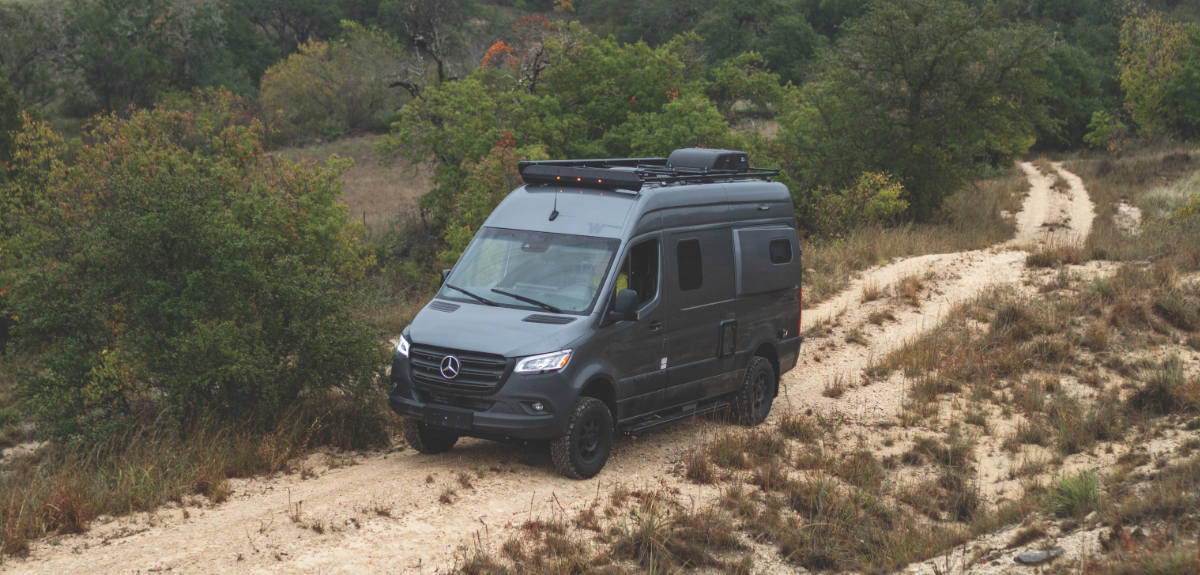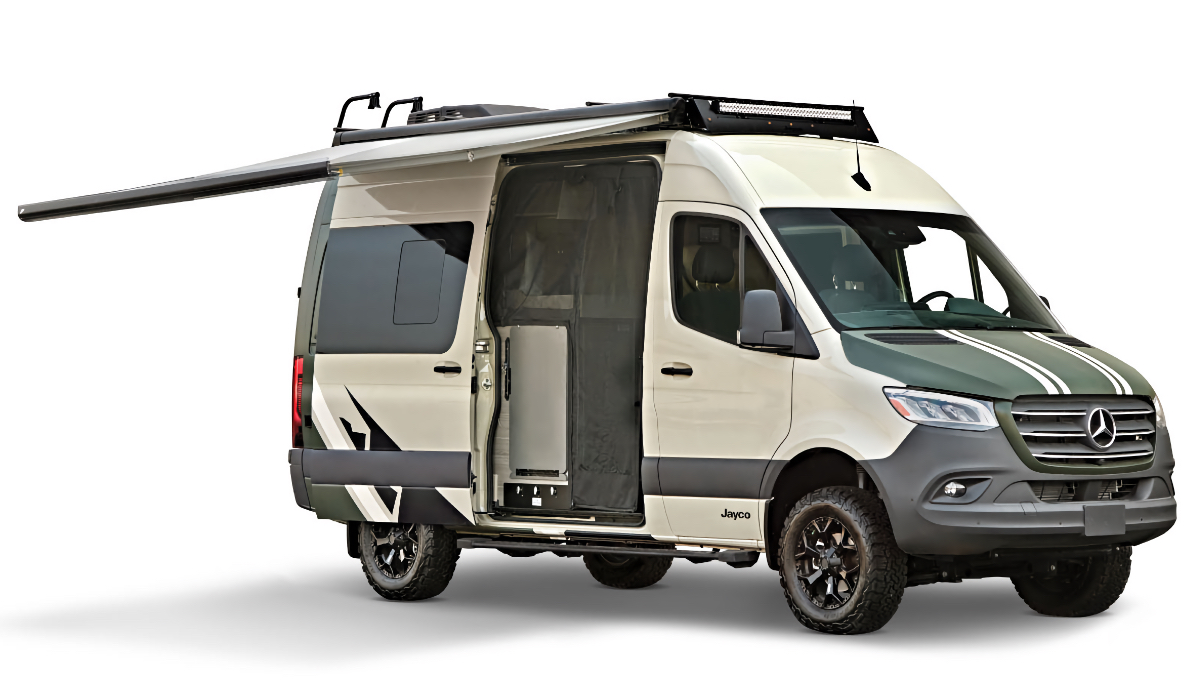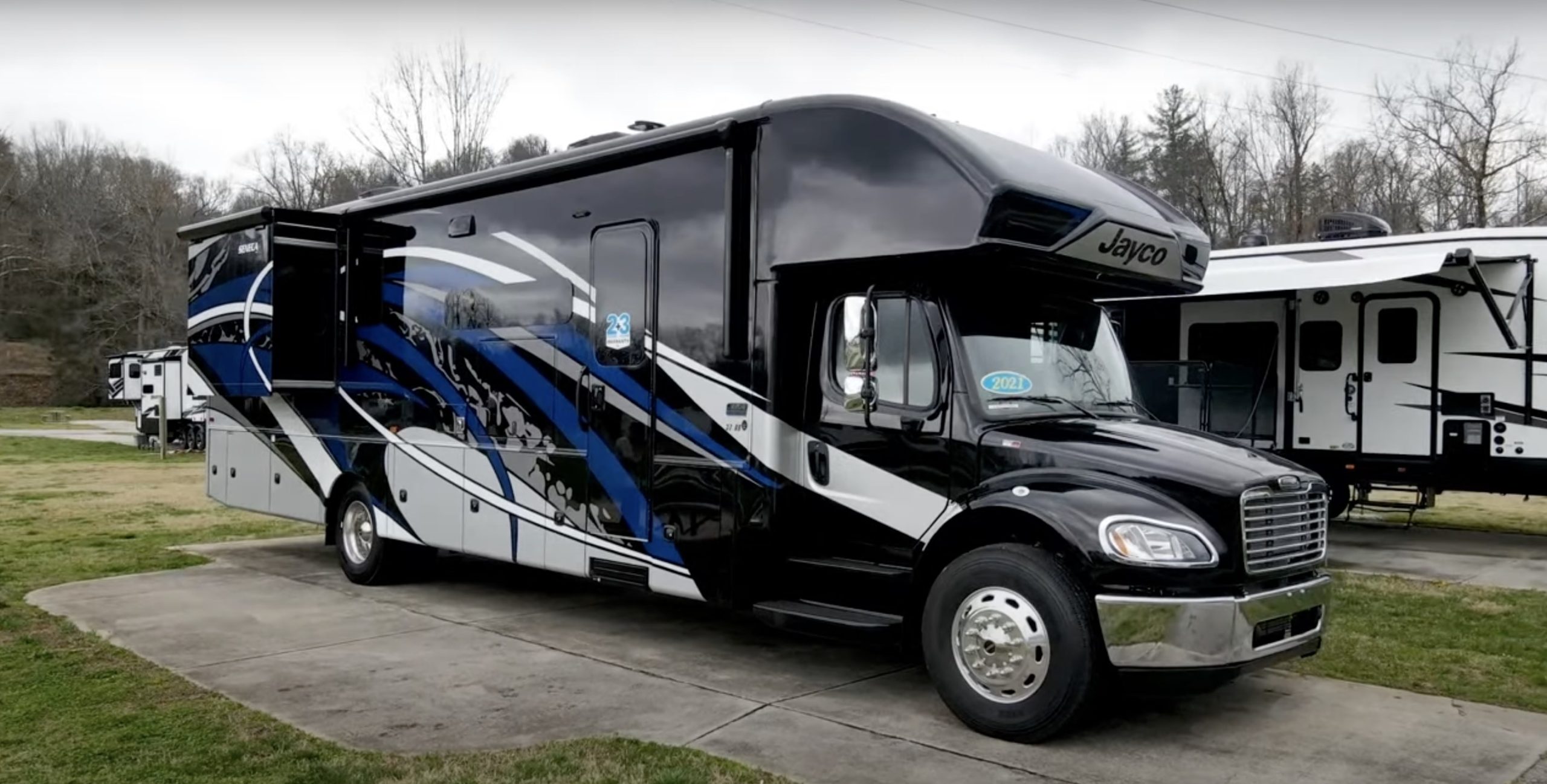Class A: Winnebago Intent 30R
Image Caption:
Buying a Class A motorhome is a big decision, and it’s not unusual for dreams and desires to outpace one’s pocketbook. Luxury and convenience continue to drive prices up – and sticker shock is more prevalent than ever. Shop around; you’ll undoubtedly find that even entry-level Class A’s require a fairly high price of admission.
Winnebago, one of the nation’s premier builders of motorhomes (and holder of one of the world’s most recognizable monikers) has just introduced the Intent, a freshly conceived Class A earmarked at entry-level buyers who still want a decent level of pizzazz in a motorhome without sacrificing the necessary amenities – or smashing the bank account. We got an exclusive look and hands-on experience with the Intent long before it was announced to the public. And at $120,000 (MSRP), it’s destined to become one of the more affordable, fully outfitted Class A’s on the market.
The Intent line will be comprised of only four models, ranging in size from 26 feet, 10 inches to 31 feet, 10 inches. We tested the 30R, which spans nearly 31 feet, but that will be recognized as the company’s “30-footer” in the line. It’s built on a Ford F-53 chassis with a 16,000-pound gross vehicle weight rating (GVWR) and, considering the relative light weight and short rear overhang, the Intent can be scooted around town with alacrity – courtesy of the power-to-weight advantage that gives the motorhome plenty of get-up-and-go.
Carving a big chunk of costs out of any motorhome takes some skill, and Winnebago has applied principles and procedures from its extensive line of Class A motorhomes to develop the Intent. Exterior lines mimic Winnebago’s family history, and the injection of unexpected features in a motorhome in this price category gives the Intent project team bragging rights.
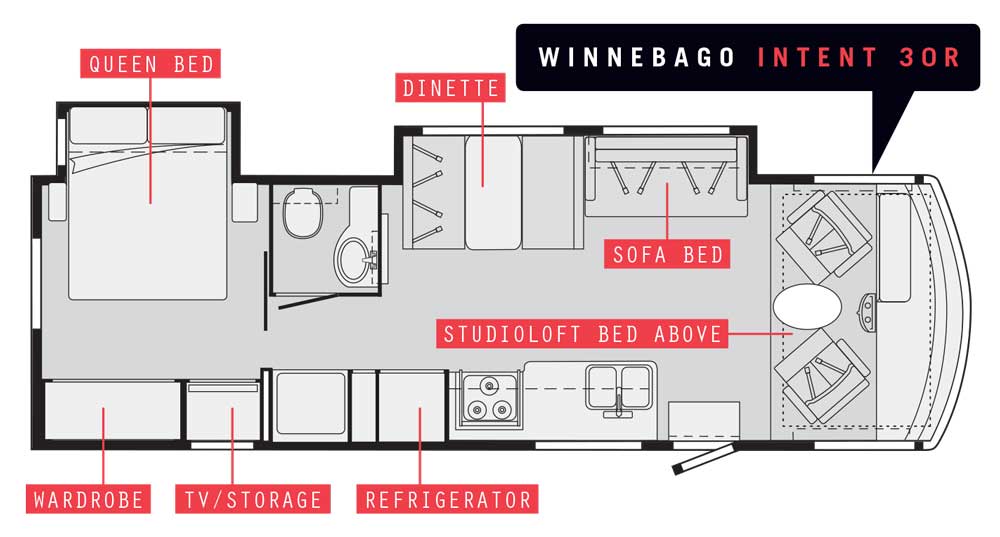
Inside
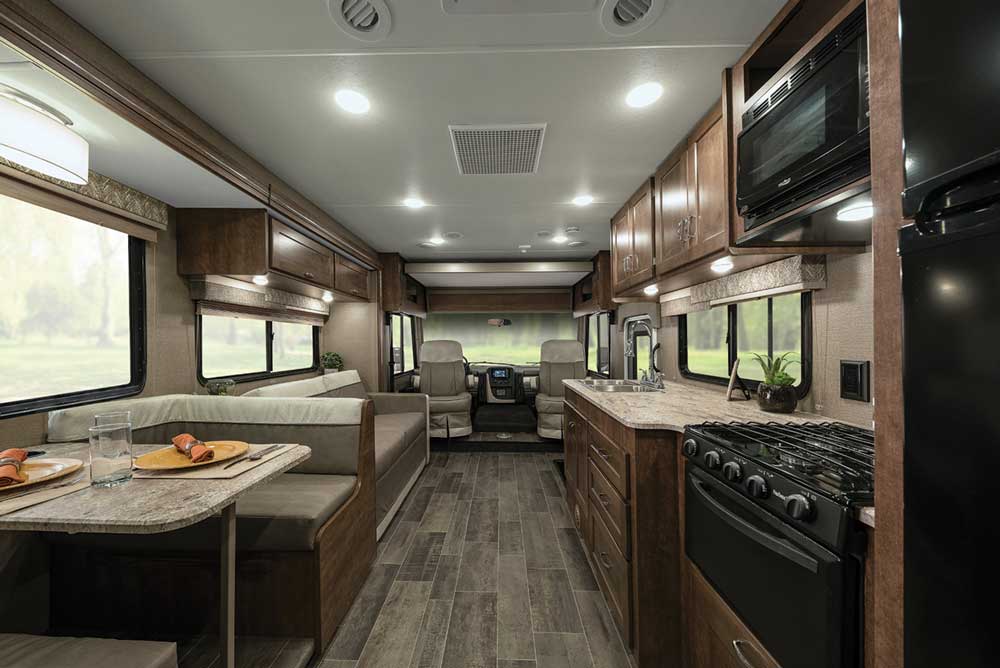
The slideout on left side provides open space between the couch, dinette and galley. Four people can sit comfortably on the semi-wraparound dinette, and the couch converts to a bed for two.
Inside, elements taken from the company’s Brave line reduced the time needed to bring the Intent to market and, for example, provided a strong foundation for the design and implementation of the dashboard. Here, simplicity is the theme, but ergonomics are a priority, and the results show.
Sleeps
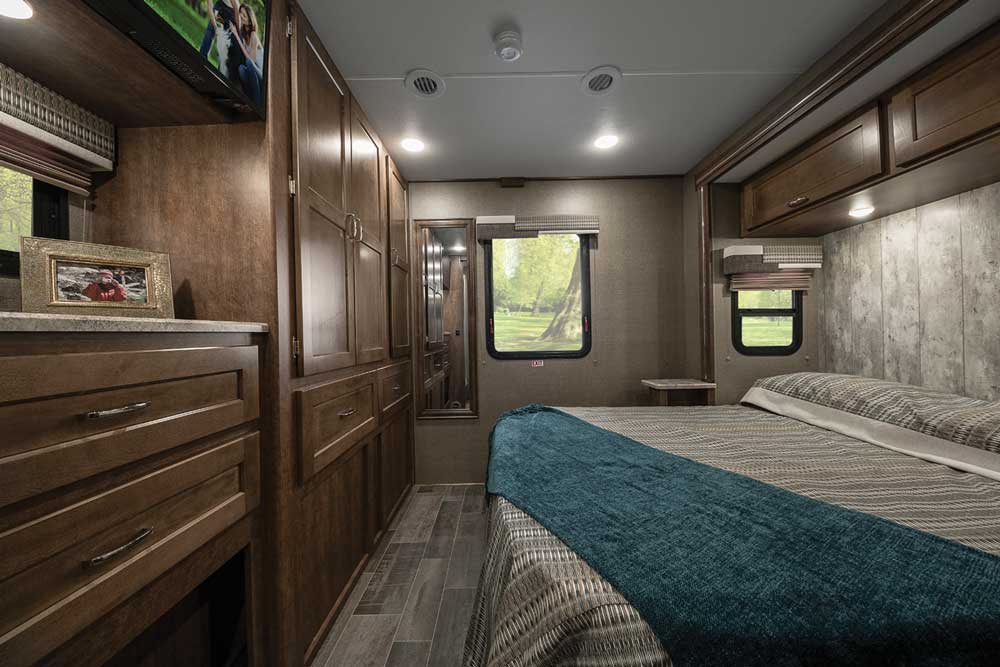
The windows in the rear bedroom provide excellent cross ventilation. The standard mattress is on the thin side, but storage capabilities throughout are expansive.
The bedroom is expanded by a slideout that houses the queen-size bed. While cozy, there is enough room to walk around the mattress, and nightstands are well placed to hold nighttime essentials. In each nightstand are USB and 120-volt AC power receptacles for charging or running electronic items.
To keep the bedroom straightforward, designers elected to use a different type of decorative headboard, which may or not appeal to everyone. The mattress is on the thin side, but owners can easily swap it out or improve sleeping comfort with a pillow-top cover. Strategically placed windows in the slideout, right-side and rear walls provide good cross ventilation, which is highly desired by most owners.
The array of cabinetry, overhead and across from the bed, provides a tremendous amount of space for clothing and larger items. There’s a roomy wardrobe with three closet doors and four drawers to hold folded clothing. A shelf below the TV is a great catchall for daily articles.
Galley & Storage
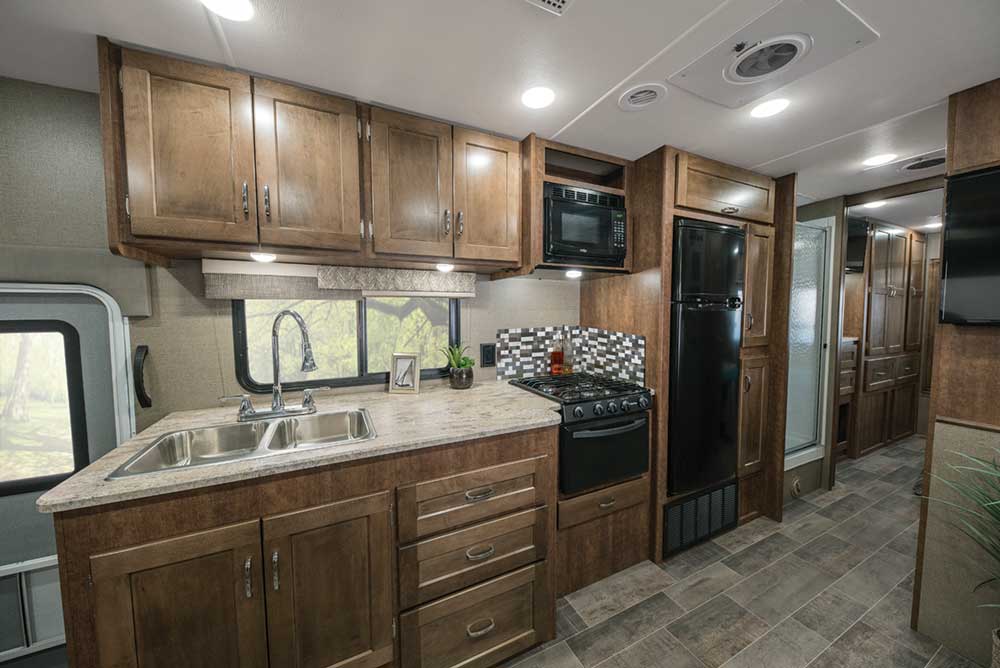
The galley is complete with stove/oven and residential refrigerator. Counterspace for meal prep is very workable.
Generous placement of cabinets, overhead and below the roomy galley counter, make this floorplan very accommodating for preparing meals and cleanup. An unexpected pantry swallows up enough groceries for the family. The usual appliances are present with the exception of the residential refrigerator, which is less common in smaller motorhomes. A 1,000-watt power inverter is tied to a pair of Group 31, 12-volt batteries to keep the refrigerator running with enough wattage left over to power the entertainment equipment.
Living Area
Behind the cockpit, the floorplan is pretty standard fare for a motorhome of this stature. A faux wood floor that is very rich-looking is used throughout the interior. Visually, the living areas are much bigger than the specifications suggest. A large slideout on the left opens up the front section, providing a nice separation between the curbside galley and opposing couch and dinette. Three people can lounge on the couch, which converts to a double bed, and the dinette has a quasi-wraparound physique, which is roomy. The upholstery has a few retro touches and fits the scheme tastefully. The largest of the three TVs is hung on a wall in back of the rear dinette seat. It can be viewed easily from the front dinette or cockpit seats, but those sitting on the couch will have to twist their necks. The other two TVs are in the bedroom and outside galley (more on that later).
Once the cockpit seats are swiveled and the aforementioned table is in place, the area becomes quite comfortable for six residents – and even a few visitors. Considering that entry-level motorhomes appeal to younger families, the ability to satisfy the sleeping, eating and driving needs for mom and dad and up to four kids puts the Intent into a very favorable category.
Bathroom
The split bathroom is another key element in this motorhome; it’s practical and makes the best use of the limited real estate. On the right is a big shower with a skylight to expand headroom. A glass door is a plus, considering many motorhome builders in this category gravitate toward plastic. Across the hall is the private toilet room with all the essentials and a surprising amount of room. Here, there are plenty of cabinets and enough counterspace surrounding the oval stainless-steel sink for toiletries. When the door is fully open, the area is sealed off from the living area and creates a master suite encompassing the rear bedroom.
The Cockpit
Winnebago designers expended a lot of energy in the cab region of the Intent. Driver comfort is excellent and visibility is superb, attributed to the large panoramic windshield and narrow A-pillars, which limit blind spots, especially when turning. The aforementioned Brave-esque dashboard is free flowing and instrumentation is complete, and a new articulating stereo/backup camera makes it easy for the driver and co-pilot to view the screen without body gymnastics – the result of customer response to the old-style component.
Missing are the customary ledges to hold food and drinks in the cockpit, which gave way to a unique table arrangement that mounts on a pole that can be planted between the seats. The table can be arranged in a number of configurations to serve the driver and co-pilot while on the road or at an RV park. The versatility is outstanding, and the table and pole can be stored easily in the rear closet, but adding a few cup holders would make the table even more practical when driving.
To further augment cockpit area multitasking, newly designed integrated power tracks are used to lower and raise the StudioLoft bed above the seats. This cleverly engineered system is quiet and smooth, and all the hardware is concealed nicely in the interior side walls. No latching is required, and when down, the area becomes very private since there are no windows to cover. The bed, measuring 52 by 77 inches, is big enough for one adult or possibly two kids, depending on age, and the mattress is fairly comfortable; the ladder stores under the mattress.

Clockwise from top left: Stereo controls and backup monitor screen have been configured to rotate for easy viewing.
Outside
Materials & Construction
At first glance, it’s not abundantly clear that the Intent is entry-level, other than the white exterior and simple graphics. No doubt the absence of flowing, colorful striping takes some visual acclimation, but once the goal is deconstructed, the end result makes sense. For one, the single stripe on each side wall, cleverly infused with “subliminal” W’s throughout, means future maintenance of countless stick-on graphics commonly found on RVs will be curtailed. Settling on white with limited striping was a calculated decision. Winnebago cites studies suggesting that white is safer because it’s more visible, is easier to clean and has better solar reflectiveness, so technically it should stay cooler inside. White is a popular color for automobiles for the same reasons. Interestingly, the only two options are the colors of the graphics: blue or burgundy. Pretty much everything else is standard, but the process is still in motion. As of presstime, the Intent team was putting the finishing touches on equipment and amenities, but remains focused on limiting options.
Side walls are comprised of aluminum framing and laminated panels, in step with other Winnebago products, but the Intent is fitted with a rubber roof in lieu of fiberglass.
Overall, this is a highly livable floorplan for the size of the motorhome. A lot of thought went into providing systems that are easy to understand and use. Many of the high-tech gizmos are absent, but Winnebago has retained convenience items like the OnePlace control center. The company has focused on simplicity without compromising comfort for a family of up to six. Thoughtfully, since there is virtually no option list, neophytes will not have to risk leaving something out during the purchasing process.
Notable Equipment & Features
A walk around the exterior will reveal a number of features, some of which are uncommon in motorized RVs. For one, LP-gas is not stored in the usual frame-mounted tank. Instead, two 5-gallon cylinders, commonly found on trailers and fifth-wheels, are mounted in a left-side compartment. The idea is to allow users to remove the cylinders for refilling without moving the motorhome. To make this system workable, a dual-stage, auto changeover regulator is employed to allow an empty cylinder to be transported for filling without interrupting the flow of LP-gas. Towable owners have been doing this for many years, and it works well. To make the system even more versatile, provisions are made to carry two additional cylinders in the same compartment. Doing this will increase LP-gas capacity to 20 gallons, and serve double duty by allowing one of the extra cylinders to be used to fire barbecues and lanterns, for example, without devoting valuable storage space elsewhere.
Exterior Storage Space
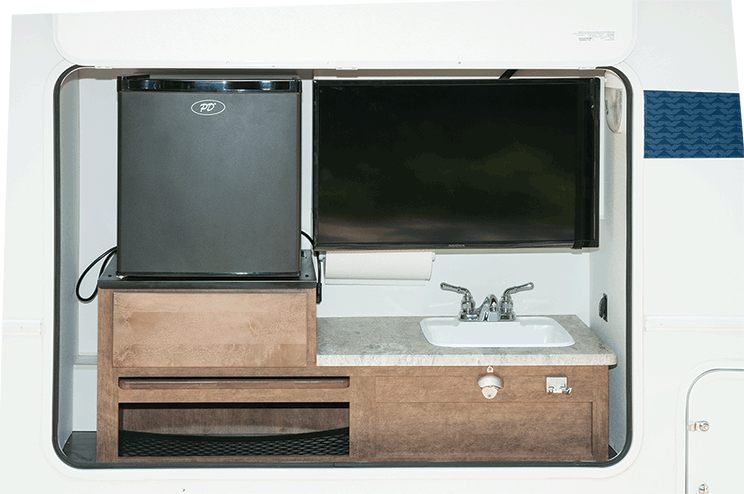
https://www.rv.com/wp-content/uploads/2020/12/intent-11.gif
Exterior storage is pretty decent considering the available square footage. Two of the compartments on each side have shallow pass-throughs, which are suitable for storing flat chairs and other longer items (think fishing rods). You won’t find slam-latch handles, but going with hardware typically used on towables keeps the price under control. What you will find is a well-thought-out utility bay with 3-inch fittings for the gray- and black-water holding tanks, and a very large opening to allow the sewer hose to be routed into the compartment without struggling. Hooking up in an RV park is simple, sans complicated valving, and some of the connections, such as those for the cable and satellite TV, are on the outside wall. There is no gravity feed for filling the water tank, a feature that is headed for extinction in the motorhome segment of the industry, but there is a threaded cap on the tank that can be accessed inside for filling with a hose. Hatches are also provided for the sewer hose and the power cord. Batteries, commonly mounted under the entry steps in many Winnebago products, have been moved to a dedicated compartment for easy access and service.
At the rear, on the patio side, a large compartment door – held up with magnetic catches – leads to a well-equipped exterior kitchen/entertainment center. Here you’ll find a sink, a small compressor-type refrigerator that can be set for cooling or freezing food, a pull-out shelf and a 32-inch TV on a swivel bracket that can be positioned to watch from the patio. There is also a drawer for utilities, a paper-towel holder, a 120-volt AC receptacle and even a bottle opener.

In a unique move, designers relocated LP-gas storage from the standard frame-mounted tank to a compartment that can house four 5-gallon cylinders
Operation and Ease of Use
A pump must be switched on to drain the water from the exterior sink into the gray-water tank. It’s located in an adjacent compartment, where a manifold-type water system neatly organizes all the lines. The only water connections are at this manifold and the faucets and toilet, resulting in no extreme bends in the Pex tubing or unions elsewhere to leak.
While there are certain compromises that were needed to get the price point to entry level, one of them was not structural integrity. Designers and engineers were quick to point out that proprietary construction techniques were maintained throughout the Intent line. The one-piece front cap is a first and very pleasant looking; it houses the aforementioned one-piece, flush-mounted windshield. A large hood opens wide to reveal access to the starting battery and to provide easy reach to all of the fluid fill locations. Behind the cap is basically the same steel cage that delivers comparable cockpit protection afforded by all Winnebago Class A products.
What We Liked
Roomy interior for overall size; adjustable stereo/backup monitor; one piece front cap with panoramic windshield; outside entertainement and kitchen; LP gas storage.
What We’d Like to See
Better cargo latches; visibility of tv from couch; better bedroom mattress.
Final Thoughts
Kudos to Winnebago for expanding the marketplace for people with smaller budgets who still want the quintessential Class A experience.
Winnebago Industries Inc. | 641-585-3535 | www.winnebagoind.com
Manufacturer’s Specs

Bob Livingston
An RV/MH Hall of Fame inductee and publisher emeritus of Trailer Life and MotorHome, Bob Livingston is a lifelong RV enthusiast. After more than four decades at the RV publications, in 2017 Bob set out with his wife to travel and live full time in their fifth-wheel trailer.


